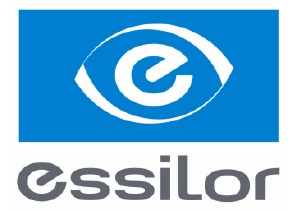 Essilor of America has introduced an “Eye-Sun Protection Factor” (E-SPF) to drive consumer awareness about the importance of protecting eyes from damaging UV rays. Inspired by the systems used to rate skincare and sunscreen products, the company says this new evaluation system reinforces its commitment to UV defense, following the recent launch of a new generation of Crizal No-Glare lenses.
Essilor of America has introduced an “Eye-Sun Protection Factor” (E-SPF) to drive consumer awareness about the importance of protecting eyes from damaging UV rays. Inspired by the systems used to rate skincare and sunscreen products, the company says this new evaluation system reinforces its commitment to UV defense, following the recent launch of a new generation of Crizal No-Glare lenses.
“Essilor is convinced that the new E-SPF evaluation system, along with the new generation of Crizal lenses, will improve consumer knowledge about the need for visual health protection from the invisible and often irreversible dangers of UV light,” says Carl Bracy, senior vice president of marketing and new business, Essilor of America. “These breakthrough advancements have the potential to make an impact on the lives of individuals of all ages with all types of vision needs, all year long.”
Driving Consumer Awareness: The Eye-Sun Protection Factor
The E-SPF evaluation system developed by Essilor provides an objective index for eyewear, certifying the global UV protection of a lens. It will help consumers understand the level of UV protection provided by their eyewear. Values currently vary from 2 to a maximum of 25 for every day, clear lenses and “50+” for tinted as well as polarized sun lenses. With an E-SPF of 25, Crizal lenses are the only ones to reach the most complete level of protection in the clear lens category and outperform other No-Glare lenses on the marketplace.
Eye-Sun Protection Factor (E-SPF) Evaluation System Released by Essilor
Developed and studied in collaboration with independent third parties, the E-SPF protocol and values have been endorsed by Dr. Karl Citek, OD, PhD, Professor of Optometry, and one of the first researchers to have established the hazard linked to backside UV reflection.
Essilor’s New Solution: Exclusive Backside UV Protection
Higher-index lens materials prevent transmission of the majority of the UV rays hitting the front side of the lens. However, up until now, even the best clear eyeglasses did not protect against the danger of UV rays coming from the back and sides of the lens, which can represent up to 50 percent of damaging UV exposure.
The new generation of Crizal features Essilor’s exclusive Broad Spectrum Technology, which virtually eliminates UV light reflection into the eyes, while maintaining maximum visible light transmission for crisper, clearer vision. This technology extends the No-Glare efficiency of Crizal lenses from the visible to UV light spectrum.
Eyecare professionals can sign up for the Crizal UV Advanced Product Training module, which is available through ECP Universityat ecpuniversity.com/APT, to gain in-depth knowledge regarding the dangers of UV and the technologies behind this newest generation of Crizal lenses.
UV Radiation: A Significant Threat to Healthy Vision
UV rays have a direct and irreversible impact on eye health: UV rays have been proven to accelerate eye aging, skin cancer and the appearance of cataracts. It is estimated that approximately 15 million people worldwide become blind from cataracts annually, of which up to 20 percent may be caused or aggravated by UV exposure. In addition, 5 to 10 percent of skin cancers, also directly linked to UV rays, appear in the eye periphery. UV rays pose a threat 365 days a year, even in cloudy weather. As much as 40 percent of UV exposure occurs when people are not in full sunlight.





















